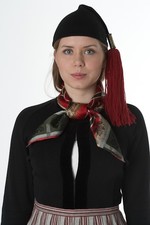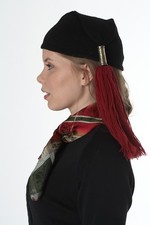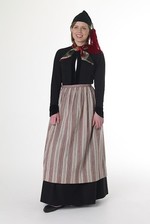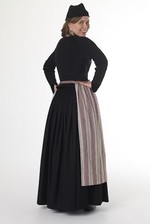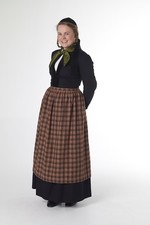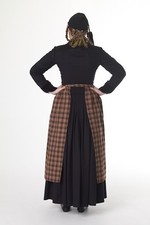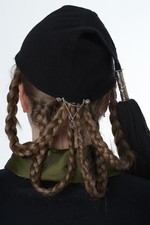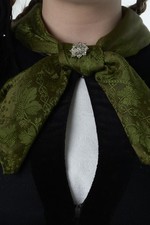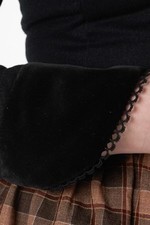19th century peysuföt
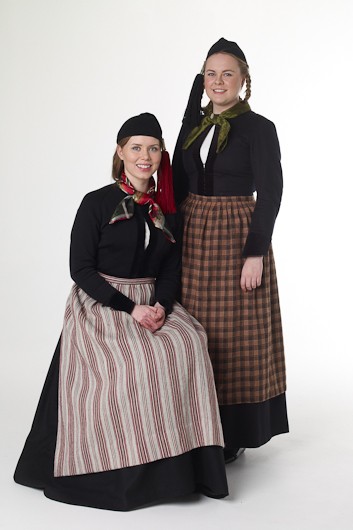 In the 19th century the peysuföt costume was generally black, but sometimes dark blue. The skirt was of woven woollen cloth. The costume derives its name from the long-sleeved jacket or peysa, which was tightly-fitted with long close-fitting sleeves. In the early part of the century the peysa was knitted of fine woollen yarn and then felted, but in the latter half of the century it was more commonly sewn from woven cloth.
In the 19th century the peysuföt costume was generally black, but sometimes dark blue. The skirt was of woven woollen cloth. The costume derives its name from the long-sleeved jacket or peysa, which was tightly-fitted with long close-fitting sleeves. In the early part of the century the peysa was knitted of fine woollen yarn and then felted, but in the latter half of the century it was more commonly sewn from woven cloth.
Black velvet was sewn to the plackets and cuffs. The front of the peysa was hooked together, leaving an opening over the breast where the chemise was visible. At the bottom of the peysa, on the back, was a strip of matching fabric, the stokkur or stakkur, which concealed the waistband of the skirt. The jacket or peysa was sometimes identified by this feature, and called a stokkapeysa or stakkpeysa. Around the neck there was a scarf of a contrasting colour. The apron was of woollen or cotton cloth – sometimes even silk – vertically-striped or chequered. The costume was worn with a deep knitted cap of fine black woollen yarn with a red, green, blue or black tassel. The join between cap and tassel was concealed by a cylindrical ornament of metal-thread ribbon or of silver. In the 19th century most women still wore woollen stockings and simple home-made shoes of sheep leather.


